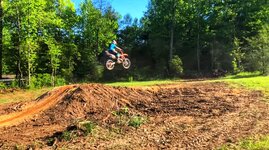Beendare
WKR
I think many of us that workout regularly intuitively know this but now multiple randomized studies confirm that exercise is one of the best treatments for depression…,
Study is HERE at the BMJ.com website
Commentary on Zero Hedge;
Across all modalities, more intense exercise such as running, interval training, strength training, and mixed aerobic exercise yielded greater benefits, although even light physical activity such as walking or hatha yoga still provided “clinically meaningful effects.” The benefits of exercise were equally effective at different weekly doses for those with other medical conditions and baseline levels of depression.
Overall, dance outperformed all other exercises and established treatments for depression, including selective serotonin reuptake inhibitors and cognitive behavioral therapy.
————-
Cut and paste from a section of the study itself;
Results 218 unique studies with a total of 495 arms and 14 170 participants were included. Compared with active controls (eg, usual care, placebo tablet), moderate reductions in depression were found for walking or jogging (n=1210, κ=51, Hedges’ g −0.62, 95% credible interval −0.80 to −0.45), yoga (n=1047, κ=33, g −0.55, −0.73 to −0.36), strength training (n=643, κ=22, g −0.49, −0.69 to −0.29), mixed aerobic exercises (n=1286, κ=51, g −0.43, −0.61 to −0.24), and tai chi or qigong (n=343, κ=12, g −0.42, −0.65 to −0.21).
The effects of exercise were proportional to the intensity prescribed. Strength training and yoga appeared to be the most acceptable modalities. Results appeared robust to publication bias, but only one study met the Cochrane criteria for low risk of bias. As a result, confidence in accordance with CINeMA was low for walking or jogging and very low for other treatments.
Conclusions Exercise is an effective treatment for depression, with walking or jogging, yoga, and strength training more effective than other exercises, particularly when intense. Yoga and strength training were well tolerated compared with other treatments.
Exercise appeared equally effective for people with and without comorbidities and with different baseline levels of depression. To mitigate expectancy effects, future studies could aim to blind participants and staff. These forms of exercise could be considered alongside psychotherapy and antidepressants as core treatments for depression.
Study is HERE at the BMJ.com website
Commentary on Zero Hedge;
Key Findings
They found that walking or jogging, yoga, strength training, and dancing were the most effective exercise modalities when used alone without medical treatment, and that certain exercises affected men and women differently. Notably, walking and jogging were effective for both men and women, while strength training and cycling were more effective for women and younger people. Yoga and qigong were more effective for men and older adults, while aerobic exercise positively impacted men more than women when used with psychotherapy.Across all modalities, more intense exercise such as running, interval training, strength training, and mixed aerobic exercise yielded greater benefits, although even light physical activity such as walking or hatha yoga still provided “clinically meaningful effects.” The benefits of exercise were equally effective at different weekly doses for those with other medical conditions and baseline levels of depression.
Overall, dance outperformed all other exercises and established treatments for depression, including selective serotonin reuptake inhibitors and cognitive behavioral therapy.
————-
Cut and paste from a section of the study itself;
Results 218 unique studies with a total of 495 arms and 14 170 participants were included. Compared with active controls (eg, usual care, placebo tablet), moderate reductions in depression were found for walking or jogging (n=1210, κ=51, Hedges’ g −0.62, 95% credible interval −0.80 to −0.45), yoga (n=1047, κ=33, g −0.55, −0.73 to −0.36), strength training (n=643, κ=22, g −0.49, −0.69 to −0.29), mixed aerobic exercises (n=1286, κ=51, g −0.43, −0.61 to −0.24), and tai chi or qigong (n=343, κ=12, g −0.42, −0.65 to −0.21).
The effects of exercise were proportional to the intensity prescribed. Strength training and yoga appeared to be the most acceptable modalities. Results appeared robust to publication bias, but only one study met the Cochrane criteria for low risk of bias. As a result, confidence in accordance with CINeMA was low for walking or jogging and very low for other treatments.
Conclusions Exercise is an effective treatment for depression, with walking or jogging, yoga, and strength training more effective than other exercises, particularly when intense. Yoga and strength training were well tolerated compared with other treatments.
Exercise appeared equally effective for people with and without comorbidities and with different baseline levels of depression. To mitigate expectancy effects, future studies could aim to blind participants and staff. These forms of exercise could be considered alongside psychotherapy and antidepressants as core treatments for depression.

